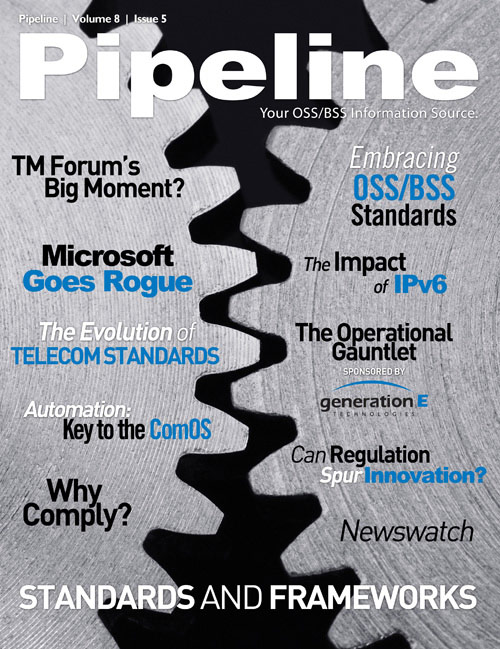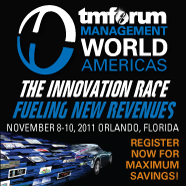So, based on the narrative coming from the TMF, the approach to both information and processes that they offer have real benefits to the provider. If that’s the case, why weren’t these standards offered in a more cohesive way from, say, 1988 to the present?
Creaner seems unsurprised when I asked, “What took so long?”
“It doesn’t take long to create these standards,” said Creaner. “That’s the easy bit. Trying to get adoption is the hard part.” Therefore, perhaps it is the changing business landscape that is driving adoption. “The reality is that people adopt standards when they are no longer willing to pay the cost of going proprietary.”
Creaner and the TM Forum are unequivocal on the idea that standards reduce cost. Furthermore, they have released numerous case studies from providers who insist that experience has supported this idea of cost savings as a result of Forum-backed standards.
However, the Forum’s particular take on standards is not without its skeptics.
“When we look at TM Forum, it’s all high level architectures and it’s all a little bit loosey-goosey,” said Alan Quayle, an industry analyst and longtime observer of the Forum. This looseness, according to Quayle, stems from how the Forum makes its money and who, therefore, gets a seat at the standards-crafting table. “The paymasters are the big suppliers,” said Quayle. “They’re the ones with the big budgets at the conferences. They’re laying down millions of dollars for their stands and their platinum or ultra-platinum or diamond-diamond-diamond sponsorships.”
Quayle compares that to other industries, like financial services, wherein standards are highly specific and set by the service providers with suppliers supporting, but not driving, the process.
“If it was a pure standards body owned and operated by the service providers, I think we’d get a lot more specificity.” said Quayle.
His solution? Create just such a standards body by splitting the standards group from the conference organizing group. “All the money is made on the conference organization,” said Quayle, “which might bias the focus of the standardization a little bit.”
However, Creaner insists that while suppliers are a part of the process, it is service providers who are driving the effort. Whereas service providers once insisted on designing their own systems and services, “they now understand that there is no differentiation in a lot of these basic areas,” said Creaner. “There’s only unnecessary cost.” He uses the analogy that if the telcos ran the airline industry, every carrier would have its own style of plane or its own fuel or its own proprietary type of wing. However, they are increasingly understanding that standardization does not mean a lack of differentiation.
”This could have happened 20 years ago, but the pain wasn’t there,” said Creaner.“And once they start mandating it in their procurement activities, the supply side rapidly shifts over and follows the money. The whole thing really starts with the service provider, their level of need and their level of pain.”
Given a real and growing demand among service providers for interoperability, and the growth of technologies like service-oriented architecture (SOA) and cloud computing, the TMF is well positioned to take advantage of their recent self-appointment as a SDO. The major remaining hurdle is also the largest one: widespread adoption of the Forum’s standards. The momentum for that adoption may require more than just a casual rebranding. It seems to rest, almost solely, upon the TMF’s ability to both involve and energize more CSP members to create an industry-wide set of mandatory standards, and regulate compliance across the ISV community.









